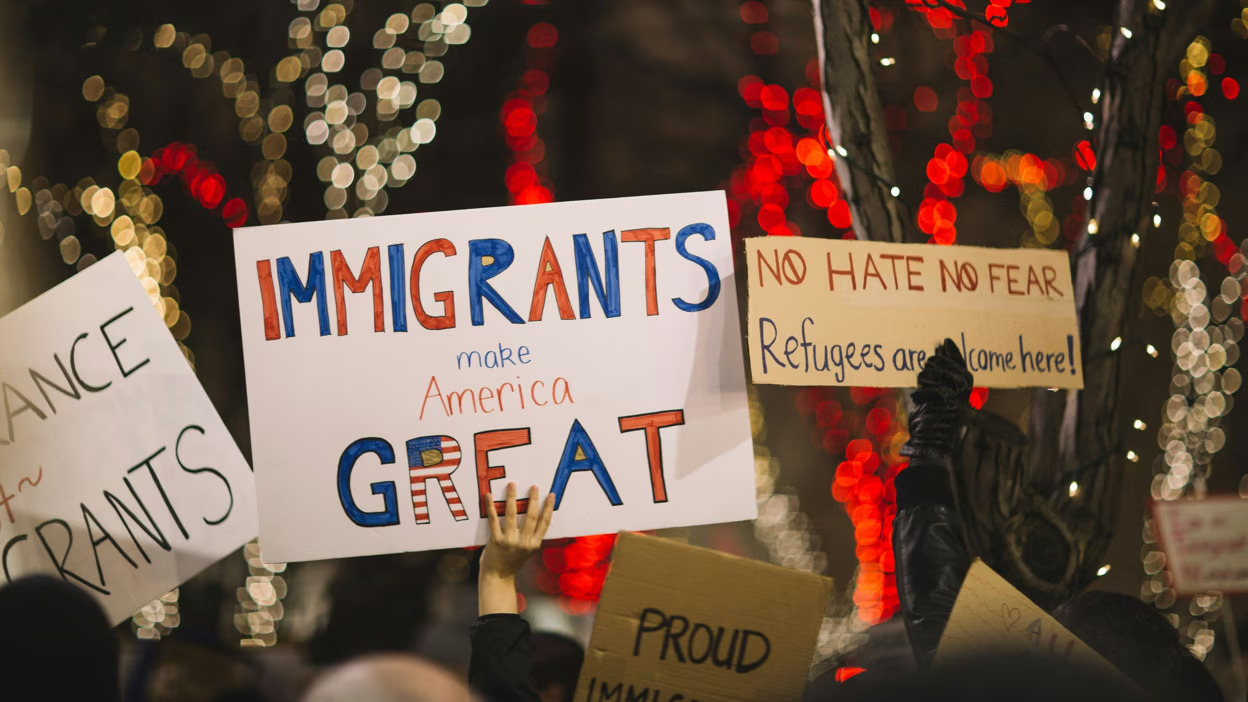Indiana has a small but growing community of immigrants, many of whom hail from Mexico. While 1 in 20 state residents was born in another country, foreign-born Hoosiers make up a vital, educated share of Indiana’s labor force. Over one-third of immigrants in Indiana possess a college or higher degree, while more than four-fifths report speaking English well. Immigrants support the state’s economy in many ways, accounting for 7 percent of business owners in Indiana and 13 percent of all computer and math employees. As neighbors, business owners, taxpayers, and workers, immigrants are an integral part of Indiana’s diverse and thriving communities and make extensive contributions that benefit all.
Five percent of Indiana residents are immigrants, while another 5 percent of residents are native-born U.S. citizens with at least one immigrant parent.
- In 2018, 354,348 immigrants (foreign-born individuals) comprised 5 percent of the population.
- Indiana was home to 160,232 women, 165,144 men, and 28,972 children who were immigrants.
- The top countries of origin for immigrants were Mexico (30 percent of immigrants), India (9 percent), China (7 percent), Myanmar (3 percent), and the Philippines (3 percent).
- In 2018, 309,417 people in Indiana (5 percent of the state’s population) were native-born Americans who had at least one immigrant parent.
Two out of five immigrants in Indiana are naturalized U.S. citizens.
- 144,767 immigrants (41 percent) had naturalized as of 2018, and 70,379 immigrants were eligible to become naturalized U.S. citizens in 2017.
- More than four in five (82 percent) immigrants reported speaking English “well” or “very well.”
Immigrants in Indiana are distributed across the educational spectrum.
- More than one-third (35 percent) of adult immigrants had a college degree or more education in 2018, while over one-quarter (28 percent) had less than a high school diploma.
|
Education Level |
Share (%) of All Immigrants |
Share (%) of All Natives |
|---|---|---|
|
College degree or more |
35 |
27 |
|
Some college |
15 |
30 |
|
High school diploma only |
23 |
34 |
|
Less than a high school diploma |
28 |
10 |
|
Source: U.S. Census Bureau, 2018 American Community Survey 1-Year Estimates. |
||
Nearly 68,000 U.S. citizens in Indiana live with at least one family member who is undocumented.
- 100,000 undocumented immigrants comprised 29 percent of the immigrant population and 2 percent of the total state population in 2016.
- 144,147 people in Indiana, including 67,700 U.S. citizens, lived with at least one undocumented family member between 2010 and 2014.
- During the same period, about 3 percent of children in the state were U.S. citizens living with at least one undocumented family member (54,483 children in total).
Indiana is home to thousands of Deferred Action for Childhood Arrivals (DACA) recipients.
- Approximately 8,870 active DACA recipients lived in Indiana as of March 2020, while DACA has been granted to about 10,771 people in total since 2012.
Immigrants are vital members of Indiana’s labor force across industries.
- 226,043 immigrant workers comprised 7 percent of the labor force in 2018.
- Immigrant workers were most numerous in the following industries:
|
Industry |
Number of Immigrant Workers |
|---|---|
|
Manufacturing |
71,366 |
|
Educational Services |
24,861 |
|
Health Care and Social Assistance |
24,645 |
|
Accommodation and Food Services |
23,046 |
|
Retail Trade |
22,914 |
|
Source: Analysis of the U.S. Census Bureau’s 2018 American Community Survey 1-year PUMS data by the American Immigration Council. |
|
- The largest shares of immigrant workers were in the following industries:
|
Industry |
Immigrant Share (%) |
|---|---|
|
Management of Companies and Enterprises |
17 |
|
Manufacturing |
9 |
|
Accommodation and Food Services |
8 |
|
Construction |
7 |
|
Educational Services |
7 |
|
Source: Analysis of the U.S. Census Bureau’s 2018 American Community Survey 1-year PUMS data by the American Immigration Council. |
|
Immigrants are an integral part of the Indiana workforce in a range of occupations.
- In 2018, immigrant workers were most numerous in the following occupation groups:
|
Occupation Category |
Number of Immigrant Workers |
|---|---|
|
Production |
39,528 |
|
Transportation and Material Moving |
28,475 |
|
Office and Administrative Support |
19,797 |
|
Food Preparation and Serving Related |
18,996 |
|
Educational Instruction and Library |
17,671 |
|
Source: Analysis of the U.S. Census Bureau’s 2018 American Community Survey 1-year PUMS data by the American Immigration Council. |
|
- The largest shares of immigrant workers were in the following occupation groups:
|
Occupation Category |
Immigrant Share (%) |
|---|---|
|
Life, Physical, and Social Science |
14 |
|
Computer and Mathematical |
13 |
|
Architecture and Engineering |
12 |
|
Production |
9 |
|
Building and Grounds Cleaning & Maintenance |
8 |
|
Source: Analysis of the U.S. Census Bureau’s 2018 American Community Survey 1-year PUMS data by the American Immigration Council. |
|
- Undocumented immigrants comprised 2 percent of Indiana’s workforce in 2016.
Immigrants in Indiana have contributed billions of dollars in taxes.
- Immigrant-led households in the state paid $1.9 billion in federal taxes and $1 billion in state and local taxes in 2018.
- Undocumented immigrants in Indiana paid an estimated $151.7 million in federal taxes and $111 million in state and local taxes in 2018.
- Indiana DACA recipients and DACA-eligible individuals paid an estimated $21.4 million in state and local taxes in 2018.
As consumers, immigrants add billions of dollars to Indiana’s economy.
- Indiana residents in immigrant-led households had $7.9 billion in spending power (after-tax income) in 2018.
Immigrant entrepreneurs in Indiana generate nearly a half-billion dollars in annual business revenue.
- 18,583 immigrant business owners accounted for 7 percent of all self-employed Indiana residents in 2018 and generated $497.9 million in business income.
- In 2018, immigrants accounted for 32 percent of business owners in the Chicago/Naperville/Joliet metropolitan area (which spans Illinois, Indiana, and Wisconsin); 9 percent in Cincinnati/Middleton (which spans Ohio, Kentucky, and Indiana); and 6 percent in Indianapolis.



